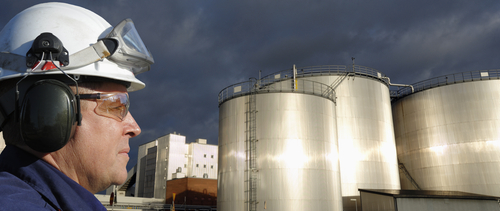 |
The updates:
- Phase in the date by which storage tanks must install VOC controls;
- Establish alternative emissions limits for tanks where emissions have declined;
- Clarify test protocols for control equipment;
- Clarify the types of tanks subject to the rule;
- Streamline compliance monitoring requirements to ensure leaks are repaired while EPA addresses monitoring issues raised in reconsideration petitions; and
- Adjust requirements for submitting annual reports.
Simplify SPCC compliance with the NEW TRAC360 platform. In just a few minutes, see how easy it is to create compliant plans and checklists, train your team, and find answers to all your SPCC questions. Learn More
EPA wants storage tanks that emit 6 or more tons of volatile organic compounds (VOCs) a year to reduce emissions by 95 percent. The updates establish two emission control deadlines:
1. Tanks that come online after April 12, 2013, are likely to have higher emissions and must control VOC emissions within 60 days or by April 15, 2014, whichever is later; and
2. Tanks that came online before April 12, 2013, are likely to have lower emissions and must control VOC emissions by April 15, 2015.
The updated standards also establish an alternative emissions limit that would allow owners/operators to remove controls from tanks if they can demonstrate that the tanks emit less than 4 tons per year of VOC emissions without controls. In addition, the rule streamlines compliance and monitoring requirements for tanks that have already installed controls.
TRAC360 for SPCC provides all of the PE-written and reviewed templates that you need to create your facility-specific required plans, checklists, and training. See how it can solve your top compliance challenges. Find out.
The oil and natural gas industry uses tanks for temporary storage of crude oil, condensate, and other liquids, before those liquids are moved to a pipeline, sold, or moved for disposal. These storage tanks can be sources of emissions of ozone-forming VOCs, along with several toxic air pollutants, including benzene. These updates do not affect the April 2012 standards for capturing natural gas from hydraulically fractured wells.
These updates respond to petitions for reconsideration of the 2012 New Source Performance Standards for Oil and Natural Gas Production. Those standards rely on proven technologies and best practices to reduce emissions of ozone-forming VOCs and air toxics, including benzene and hexane. Exposure to ozone is linked to a variety of health effects, including aggravated asthma, reduced lung function, and increased susceptibility to respiratory infections, in addition to increased risk of premature death from heart or lung disease. Benzene and hexane are air toxics, which can cause cancer and other serious health effects.
